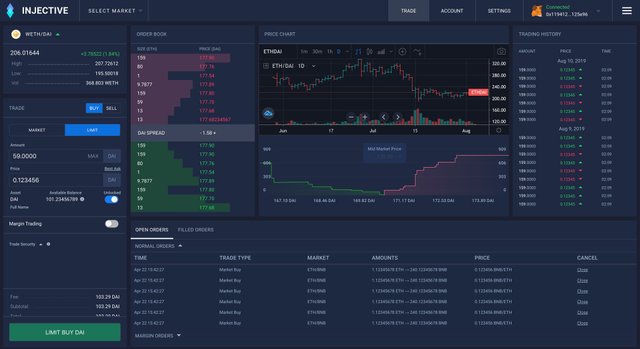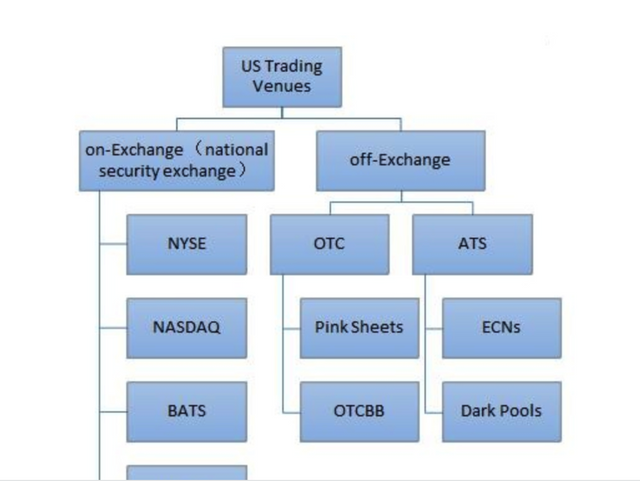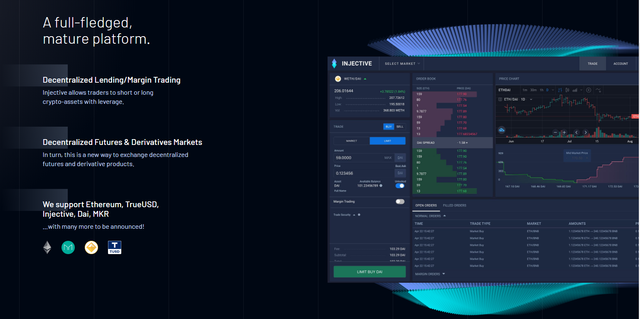Trading as a Public Utility: Future Exchange of Injective Protocol
Introduction to Injective Protocol
The Injective Chain has built with layer-2 side chain and it is Cosmos zone connected to Ethereum Blockchain. The Injective Chain has enforced a fair transaction ordering and fastest way with it, also Injective Chain solving critical race conditions and miner extractable value issues available in Ethereum chain.
Now we have got a basic idea about injective protocol and injective chain, also got an idea of what will be solved by injective protocol. The presently injective chain has powered by layer -2 derivatives platform, serves as a decentralized Trade Execution Coordinator, hosts a decentralized open order book.
The injective chain has built itself by allows for transferring and trading Ethereum-based assets on the Injective Chain.
Uses of the INJ Token
1.Proof-of-stake reward:
Validators can stake with the token and receive a block reward proportional to the stake.
2.Buy-back and Burn:
Exchange fees collected via negative spread model.
A percentage of fees are first distributed to nodes or relayers proportional to orders discovered/originated.
The rest are periodically auctioned off through smart contracts to buy back Injective's native token for burning.
3.Network Node incentive model
By hosting a node and participating in Relayers, the participant will receive a percentage of fees generated from the orders they discover. This will incentivize nodes to submit VDF time proof on the user's behalf and create a referral system where the
Internet finance age and the digital age
It started about 300 years ago during the industrial age, people were working endless to increase productivity and efficiency on machines to manufacture from stream engines to automobiles; the key words were mass production, automation with machines, and efficiency optimization for maximized profitability.
Now everything has changed, and the passing of time seems to be even faster as we witnessed the iteration of technologies. Humans shift their attentions away from basic productions and machiens back to humans themselves; the internet connects integrates humans, information, and machines/devices.
Position of exchanges
Now either in traditional finance or internet finance, "exchange" plays a fundamentally crucial role. The essence of the commodity economy is exchange economy, and in the commodity economy, productions and consumptions are matched through market exchanges.
When the a proper equilibrium is achieved for supply and deman, the marginal substitutional rate between any two commodities will be the same for any consumer, and the exchange of values is optimized.
The exchange medium and platform have been of top importance throughout the financial history. The medium has went from shells, stones, and metals to paper and now digital numbers to our eyes. The platform has evolved from the physical markets to the electronic stock trading systems and exchanges and more.
Digitalization and "internetization" are the new focuses. In the past decade, since Satoshi Nakamoto invented Bitcoin, the exchange medium and platform have again shifted from centralization to decentralization. After the ICO hypes in 2017, the tokenization of assets has grew popular and now towards better maturity.
The development and current status of traditional exchanges
An exchange is a trading platform with diverse products, which provides price discovery and liquidity for traded products. Technological advancements have facilitated and effected also the business model and infrastructure of the exchanges.
Not many people stands in offline market places and shout out the prices of their goods to attract buyers nowadays, but try to get their goods sold through electronic trading systems. In terms of the business model, most exchanges in Europe and the United States have went from membership based to form for-profit companies.
The development of exchanges based on blockchain technology
With the application of blockchain technology in asset tokenization and the trading of it, many digital asset exchanges have emerged, such as Binance, Coinbase, Bitmex etc.
These well-known exchanges are also classified as centralized exchanges in the blockchain and digital asset industry.
Centralized Exchange
When using a centralized trading platform for the first time, you need to complete the registration required by the centralized exchange and KYC (real name authentication and etc.). Upon different levels of tasks completion, you will have the permission to deposit, withdraw, trade, and more.
Deposit: deposit a certain amount of assets from other exchanges or your own wallet to the newly registered centralized exchange. It should be noted that the address to receive the deposit is assigned to you by the centralized exchange, and thus you do not have the private key to this address.
Withdraw: to withdraw assets away from the exchange, you are subject to centralized risk control conducted by the exchange persons as you do not have control of the address. It is usually the case that you will need to complete the highest level of KYC (e.g. video chat, picture with yourself holding your ID and written waiver of rights). Further the release of your assets is completely subjected to the permission and execution of the exchange staff.
Trading: this is where it gets interesting as well, when you make a trade, all transaction related data and record are stored on the exchange's server, on some of the exchanges, the settlement of a transaction does not even take place (you only see the transaction completed on the front-end), and for most you do not have access to their back-end and therefore if there is any dispute on a transaction/order, you probably would not have any edge arguing with a centralized exchang.
Decentralized Exchange
One of the key aspects of decentralized exchanges is that the exchange accounts equate to smart contract accounts. In brief, storing assets on DEX is to store them in smart contracts which is to store them in codes, and in codes you trust.
Decentralized Exchange works
Deposit: you deposit by transferring your assets into the smart contract address assigned to you by the platform.
Withdraw: directly withdraw to anywhere directly from the smart contract address.
Trading: your asset is transferred from the smart contract address directly to that of your counterparty. This transfer can be checked on the blockchain through blockchain browser, and the entire transfer process relies on smart contract's automatic execution by codes.
Official Website: https://injectiveprotocol.com
Bounty Link : https://bitcointalk.org/index.php?topic=5256993
Telegram: https://t.me/joininjective
Whitepaper Link: https://docsend.com/view/zdj4n2d
Twitter: https://www.twitter.com/@InjectiveLabs
Reddit: https://www.reddit.com/r/injective



